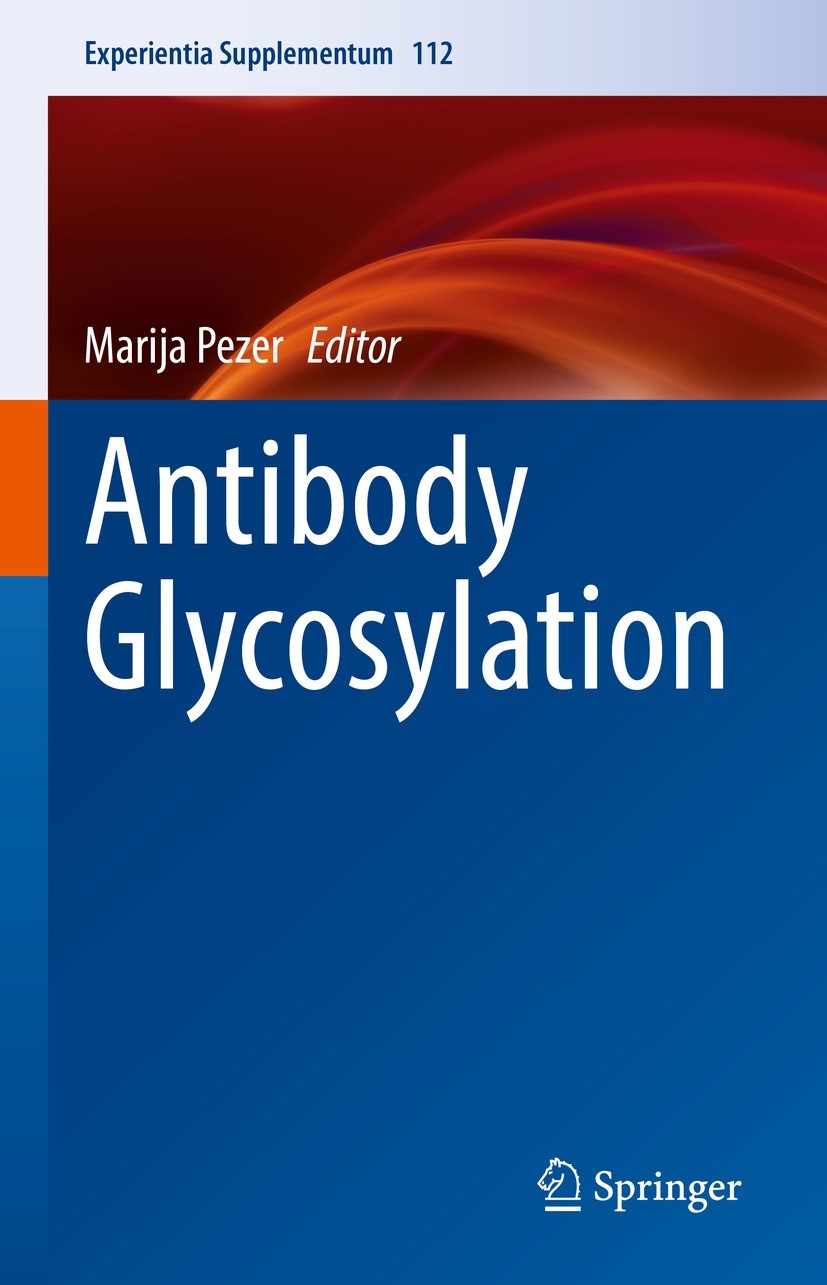| 期刊全称 | Antibody Glycosylation | | 影响因子2023 | Marija Pezer | | 视频video | http://file.papertrans.cn/159/158475/158475.mp4 | | 发行地址 | Provides a comprehensive overview on biosynthesis, regulation, functionality, analytics, and applications of immunoglobulin glycosylation.Covers automatization and bioinformatics in high-throughput an | | 学科分类 | Experientia Supplementum | | 图书封面 |  | | 影响因子 | .This book summarizes recent advances in antibody glycosylation research. Covering major topics relevant for immunoglobulin glycosylation - analytical methods, biosynthesis and regulation, modulation of effector functions - it provides new perspectives for research and development in the field of therapeutic antibodies, biomarkers, vaccinations, and immunotherapy..Glycans attached to both variable and constant regions of antibodies are known to affect the antibody conformation, stability, and effector functions. Although it focuses on immunoglobulin G (IgG), the most explored antibody in this context, and unravels the natural phenomena resulting from the mixture of IgG glycovariants present in the human body, the book also discusses other classes of human immunoglobulins, as well as immunoglobulins produced in other species and production systems. Further, it reviews the glycoanalytical methods applied to antibodies and addresses a range of less commonly explored topics, such as automatization and bioinformatics aspects of high-throughput antibody glycosylation analysis. Lastly, the book highlights application areas ranging from the ones already benefitting from antibody glycoengin | | Pindex | Book 2021 |
The information of publication is updating

|
|
 |Archiver|手机版|小黑屋|
派博传思国际
( 京公网安备110108008328)
GMT+8, 2025-12-14 05:12
|Archiver|手机版|小黑屋|
派博传思国际
( 京公网安备110108008328)
GMT+8, 2025-12-14 05:12


